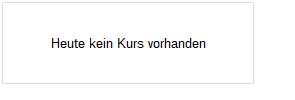
Guyana Goldfields Inc. Delivers Feasibility Study Showing Expanded Average Annual Production of 220koz and 15% Increased Reserves for the Aurora Gold Mine
Canada NewsWire
TORONTO, Feb. 2, 2017
TORONTO, Feb. 2, 2017 /CNW/ - Guyana Goldfields Inc. (TSX: GUY) ("the Company") is pleased to report the key findings from its updated feasibility study on its 100% owned Aurora Gold Mine. The updated study assumes a gold price of US$1,200 per ounce resulting in increased reserves by 15% despite net depletion of 15 months of operations and reflects an expansion of the current processing facility from 5,600 tonnes per day ("tpd") to 8,000 tpd. The proposed expansion of the mill will be completed in two phases and will increase annual production to above 200,000 ounces beginning in 2018 for the life of the mine with gold production expected to peak at 303,000 ounces in 2021. All amounts are expressed in US dollars. A conference call will be held later this morning to summarize the results of the study.
Feasibility Study Highlights
- Mineral reserves increased to 3.5 Moz, up 15% from the previous reserve estimate with a higher assumed gold price more than offsetting depletion from 15 months of operations
- Average annual production of 220,000 ounces over a 15-year mine life at an average cash cost of $612 per ounce (including royalties)
- Average head grade of 3.02 g/t Au over the life of the mine
- NPV5% of $850 million ("M")
- Open pit mining ongoing through to 2024. Development of the underground operation is scheduled to commence in 2022 with first production expected in 2024.
- Mill Expansion Phase 1:
- Debottlenecking of the back end of the circuit
- Expected to increase throughput from 5,600 tpd to 8,000 tpd based on a saprolite/hard rock blend with a concurrent improvement in recoveries of ~1%
- Expected completion by end of the first quarter of 2018 at a capital cost of $21
- Mill Expansion Phase 2:
- Addition of a ball mill resulting in increased recoveries of a further 1% to 2%
- Expected to allow the processing of 8,000 tpd of hard rock
- Expected completion by mid-2019 at a capital cost of $27
- Both phases are fully permitted and are expected to be funded internally
Scott A. Caldwell, President & CEO states, "The expansion of the Aurora Gold Mine is a phased approach that effectively manages both development and capital risk while still delivering an attractive near-term growth profile. The first phase of the expansion takes advantage of the significant amount of saprolite ore available in the mine plan over the next two years while the second phase of the expansion is expected to deliver a further improvement in recoveries while maintaining throughput levels as the mine moves into predominantly hard rock. The company is moving forward on the plan and has commenced engineering and long lead time purchases to secure prices and deliveries. Having demonstrated a successful ramp up and with operations now reaching steady state levels, the Company is in an excellent position both operationally and financially to push forward with this mill expansion to grow its annual production profile to above 200,000 ounces".
Economic & Operational Highlights
| Gold Price (base case) | $1,200/oz | ||
| Total Gold Production (Recovered Gold) | 3.3 Moz | ||
| 15 Year Mine Life | OP 2017-2024 | ||
| UG 2024 – 2031 | |||
| Average Annual Production (LOM) | 220,000 oz Au | ||
| Average Gold Grade (mill head) | 3.02 g/t Au | ||
| Mill Throughput | 2017 + 1Q18 | 5,600 tpd | |
| 2Q18 onwards | 8,000 tpd | ||
| Gold Recovery | 2017 | 91.3% | |
| 2018 (post Phase 1) | 92.5% | ||
| 2H19 onwards (post Phase 2) | 94.0% | ||
| Strip Ratio (waste to ore) | 8.4:1 | ||
| LOM Cash Costs (with royalty) | $612/oz | ||
| LOM AISC | $747/oz | ||
| Expansion Capital Cost | Mill Phase 1 (2017 + 1Q18) | $21 M | |
| Mill Phase 2 (2018 + 1H19) | $27 M | ||
| Mine Fleet (2018) | $24 M | ||
| Underground Development Cost (Year 2022 – 2024) | $129 M | ||
| Pre-Tax NPV (5% Discount Rate) | $1,054 M | ||
| After-Tax NPV (5% Discount Rate) | $850 M | ||
The full feasibility study is being filed today on SEDAR at www.sedar.com and is available on the Company's website at www.guygold.com. The feasibility study report has been prepared by SRK Consulting (Canada) Inc. with contributions from Tetra Tech and JDS Energy & Mining and is entitled "Independent Technical Report Updated Feasibility Study, Aurora Gold Mine Project" with an effective date of December 31, 2016.
Production & Cost Profile
Forecast annual production in 2017 of 171,000 ounces is expected to grow to 254,000 ounces in 2018. Production is expected to peak in 2021 at 303,000 ounces. Annual production over the 15-year mine life is 220,000 ounces. Of the total 3.3 Moz ounces recovered over the life of the mine, 1.7 Moz are sourced from the open pit operations and 1.6 Moz are sourced from the underground operations.
Operating cash costs (including the royalty expense) average $612 per ounce over the life of the mine. AISC over the life of the mine, assuming an annual corporate G&A expense and stock based compensation of $8 M and annual exploration expenses of $5 M, are expected to average $747 per ounce.
Open Pit Mining
The open pit has a mine life of 8 years based on a total of 19.6 Mt tonnes of ore mined at an average grade of 2.87 g/t Au. Average annual gold production over this period is approximately 230,000 oz. Saprolite ore makes up 2.9 Mt or ~15% of total open pit ore tonnes and is expected to be largely mined out by the middle of 2019. Approximately 60% of the ore tonnes are sourced from Rory's Knoll, 30% from Aleck Hill, with the remainder coming from the Walcott Hill, Mad Kiss and North Aleck Hill satellite deposits. Mining activity over the near term will be focused on fresh rock ore at Rory's Knoll and saprolitic ore at Aleck Hill.
The average strip ratio over the life of mine is 8.4 to 1. The strip ratio peaks in 2019 and 2020, averaging 14.6 over these two years. As a result of the increasing strip ratio during these years the mining rate is expected to increase from ~35,000 tpd in 2017 to ~95,000 tpd in 2019 and 2020. To accommodate this increase and reduce overall mining costs, the Company plans to transition to a mining fleet with larger equipment in 2018 consisting of 90-tonne haul trucks. The larger equipment will primarily be used for pre-stripping activities and mining activity higher in the pit. 41-tonne haul trucks will continue to be used deeper in the pit to reduce the overall strip ratio. The estimated capital cost to expand the mining fleet is $24 M and is expected to be incurred during 2018.
Underground Mining
Rory's Knoll
Following a two-year pre-production period, underground mining at Rory's Knoll commences in year 2024 as open pit mining operations wind down. The mining rate averages 5,500 tpd at an average grade of 3.02 g/t Au over an 8-year mine life for a total of 1.4 Moz. Vertical development is assumed to be completed by an underground contractor while all lateral development will be completed by the Company. Rory's Knoll underground will be mined utilizing the open benching and sublevel retreat mining methods via a decline access with truck haulage from a depth of -330 mRL down to -770 mRL. Below the open pit, the Rory's Knoll ore body approximates a sub-vertical pipe with >100 m diameter which, along with results from a detailed hydrogeological and geotechnical model, support the open benching and sublevel retreat mining method approach. The study results show underground mining creates minimal surface subsidence and indicate water inflows are manageable, as has been proven by existing open pit mining activities.
Satellite Deposits – Mad Kiss & Aleck Hill
The Aleck Hill underground is expected to contribute 153,000 ounces (1.1 Mt at an average grade of 4.28 g/t Au) to the overall mine plan beginning in 2025 and continuing through to 2030. Aleck Hill will be mined through a combination of transverse and longitudinal long hole open stoping ("LHOS") from a depth of about -160 mRL to about -500 mRL.
The Mad Kiss underground contributes 104,000 ounces (0.6 Mt at an average grade of 5.45g/t Au) to the overall mine plan. Mad Kiss will be developed concurrently with the Rory's Knoll underground with initial production expected in 2024 and continuing through to 2027. Mad Kiss will be mined via longitudinal LHOS from a depth of about -40 mRL to about -380 mRL.
Processing
The existing process circuit has a capacity for 5,600 tpd and includes a cyanide leach and carbon adsorption process comprising crushing, single-stage grinding, gravity, cyanide leaching, carbon adsorption, carbon elution and regeneration, gold refining, cyanide destruction and tailings disposal.
The proposed plant expansion will be completed in two phases. The first phase will increase the throughput rate from 5,600 tpd to 8,000 tpd incorporating a saprolite portion of the mill feed of between 25% and 50%. The ordering of long lead-time items for the Phase 1 expansion has already commenced and detailed engineering is expected to commence in February 2017. The first phase of the expansion is expected to be completed by the end of the first quarter of 2018. The second phase of the expansion will allow the processing of 8,000 tpd hard rock and is expected to commence in mid-2018 and be completed by mid-2019 when the majority of saprolitic ore has been exhausted.
The first phase of the expansion consists of debottlenecking the back end of the circuit and includes the addition of three leach tanks, a pre-leach thickener, carbon management systems and the expansion of the elution circuit. Due to additional retention time within the leaching circuit, the phase one mill expansion is expected to increase recoveries by approximately 1% to an estimated average recovery of 92.5%.
The second phase of the expansion will include the addition of a ball mill, an expansion of the existing gravity circuit, the addition of one new cyanide detoxification tank and the installation of four new generators with total capacity of 6.0MW. The overall gold recovery is expected to increase to 94.0% post completion of phase two of the expansion based on these upgrades to the mill.
Opportunities
Open Pit Mining
There is a steep increase in the mining rate in 2018 and 2019. This study assumes the use of larger mining equipment (both new and used) to accommodate this increase. Internal trade-off studies will be completed to ensure optimal equipment selection as well as ongoing assessment of new versus used prices for such equipment.
This study assumes the use of 10 metre benches in the rock slopes at Aleck Hill and the other satellite deposits. Together these deposits make up approximately 40% of the ore sourced from open pit mining and have an overall strip ratio of 8.4:1. There is limited geotechnical information available for these deposits. Additional geotechnical work will be completed to assess the potential to move to 20 metre benches in these deposits to reduce the overall strip ratio.
Underground Mining
This current feasibility study assumes that underground mining at Rory's Knoll will utilise open benching and sublevel retreat mining methods with mining concluding at a depth of -770 metres below sea level (mRL). The Company will evaluate the economic potential of utilising more selective mining methods at Rory's Knoll. Such mining methods could result in a higher grade profile through lower dilution and may result in additional ounces being included in the mine at depth at Rory's Knoll.
This feasibility study assumes that underground mining at the Mad Kiss and Aleck Hill satellite deposits will utilise LHOS methods. Given some of the higher grade zones within these deposits, especially at Mad Kiss, the Company is evaluating bringing forward underground production from these zones as well as using more selective mining methods. One mining method being considered is Alimak mining which typically requires less upfront capital when compared to LHOS.
Exploration
Exploration in 2017 and 2018 will be focused on both brownfield and greenfield targets. Brownfield targets include Powis Hill and Gold Creek, both proximal to the Aurora processing facility. Exploration success in finding saprolitic ore on these targets has the potential to extend open pit production and defer the second phase of the mill expansion. Greenfield targets located on the north side of the Cuyuni River include Wynamu, Sulphur Rose and Iroma. Drilling is expected to begin on Wynamu in the first quarter of this year.
Aurora Gold Mine Mineral Reserves
The Company has updated its Mineral Reserves for its Aurora Gold Mine utilizing a gold price of $1,200 per ounce and an effective date of December 31, 2016. Overall reserves increased by 15% to 3.5 Moz compared to the most recent reserve estimate which had an effective date of September 30, 2015 and utilized a gold price of $1,000 per ounce.
| | ||||
| Aurora Gold Mine Mineral Reserves Effective December 31, 2016 ($1,200/oz Au) | ||||
| Category | Quantity ('000 t) | Grade (g/t Au) | Contained Metal ('000 oz) | |
| Proven | | | | |
| | OP Saprolite | 336 | 1.60 | 17 |
| | OP Rock | 4,864 | 2.99 | 468 |
| Total Proven | 5,200 | 2.90 | 485 | |
| Probable | | | | |
| | OP Saprolite | 2,934 | 1.91 | 180 Werbung Mehr Nachrichten zur Guyana Goldfields Aktie kostenlos abonnieren
E-Mail-Adresse
Bitte überprüfe deine die E-Mail-Adresse.
Benachrichtigungen von ARIVA.DE (Mit der Bestellung akzeptierst du die Datenschutzhinweise) -1  Vielen Dank, dass du dich für unseren Newsletter angemeldet hast. Du erhältst in Kürze eine E-Mail mit einem Aktivierungslink. Hinweis: ARIVA.DE veröffentlicht in dieser Rubrik Analysen, Kolumnen und Nachrichten aus verschiedenen Quellen. Die ARIVA.DE AG ist nicht verantwortlich für Inhalte, die erkennbar von Dritten in den „News“-Bereich dieser Webseite eingestellt worden sind, und macht sich diese nicht zu Eigen. Diese Inhalte sind insbesondere durch eine entsprechende „von“-Kennzeichnung unterhalb der Artikelüberschrift und/oder durch den Link „Um den vollständigen Artikel zu lesen, klicken Sie bitte hier.“ erkennbar; verantwortlich für diese Inhalte ist allein der genannte Dritte. Andere Nutzer interessierten sich auch für folgende News |




